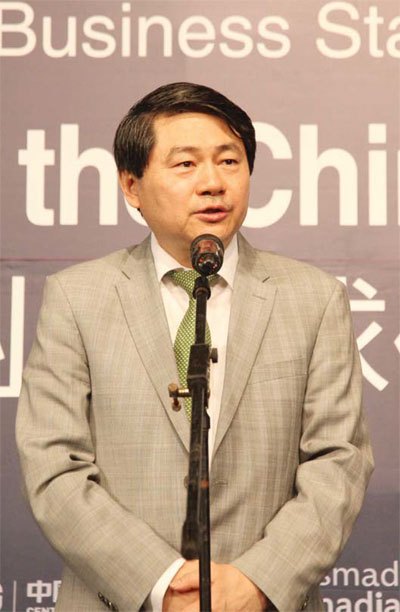Global push
Updated: 2016-01-22 08:37
By Chen Yingqun(China Daily Europe)
|
|||||||||||
|
Wang Huiyao, director of the Center for China and Globalization. |
"The number of smaller outbound investments (below $100 million) is growing fastest, as private companies and SMEs are playing a bigger role," he says, adding that, in 2014, private companies' outbound investments saw a year-on-year growth of 295 percent, and they made up of 69 percent of the total number of cases.
Xiao Qiang, director of the China Small and Medium-Sized Enterprise Institute, says most SMEs that the institute has helped go global have annual revenue of between 50 million yuan and 400 million yuan and an employee headcount below 2,000.
He says of the total, SMEs' outbound investments account for 30 percent of the value and 80 percent by number of cases.
Long Yongtu, former vice-minister of commerce, says the trend of Chinese companies going global is irreversible. China's corporate and private bank deposits amount to more than 138 trillion yuan, and the abundance of capital makes it easier for Chinese companies to invest overseas.
"Globalization is to allocate resources globally. If Chinese restructuring is conducted with a global scope, its economic transformation would be less painful and is more likely to succeed," he says.
Wang Chaoyong, founder and CEO of ChinaEquity Group, a Chinese venture capital institution, says there are three ways for Chinese companies to go global: products, industrial capacity and capital.
"I have observed huge changes in all these three," he says. "In the products, I have seen quality, added value, and brands have improved greatly. In capacity going global, a big feature is that, be it a state-owned company or SME, they cooperate and form clusters to explore overseas markets."
For capital going global, Chinese investors in the past would typically buy US treasuries, European government bonds or some blue chips, but now private equity and venture capital have become the main avenues for capital going global.
"The number of overseas mergers and acquisitions is also increasing rapidly, through which many companies are able to get overseas products, technology, sales channels, design, and so on," he says.
A recent example is Shenzhen Ellassay Fashion Co Ltd, a high-end female clothing company, which bought a Hong Kong company that owned the German fashion brand Laurel for 11.18 million euros ($12.1 million) as part of its global expansion. The takeover would see Ellassay own Laurel's design, pricing and production rights at all its stores on the Chinese mainland.
Today's Top News
Leaders address Iran's thirst for growth
UK's interest in China boosted by BBC TV series
Global push
AIIB chief vows to run clean, lean, green institution
'More Europe' to deal with 'triple crisis'
China gives beleaguered Tsipras a helping hand
China injects note of confidence in Davos
China and Gulf nations resume free trade talks
Hot Topics
Lunar probe , China growth forecasts, Emission rules get tougher, China seen through 'colored lens', International board,
Editor's Picks

|

|

|

|

|

|








